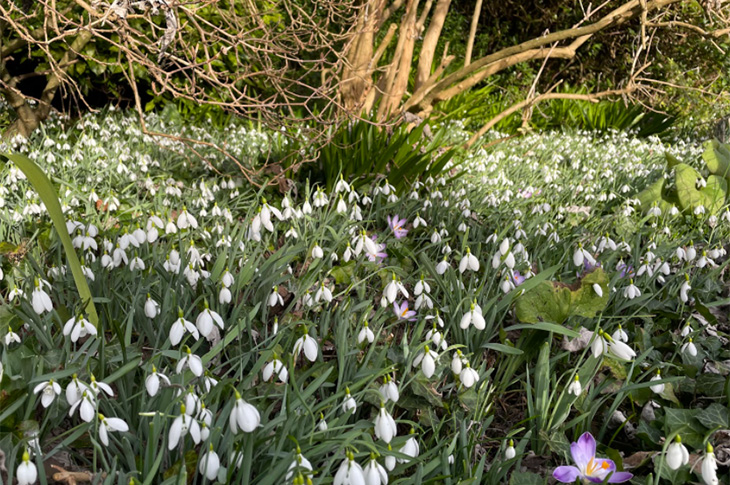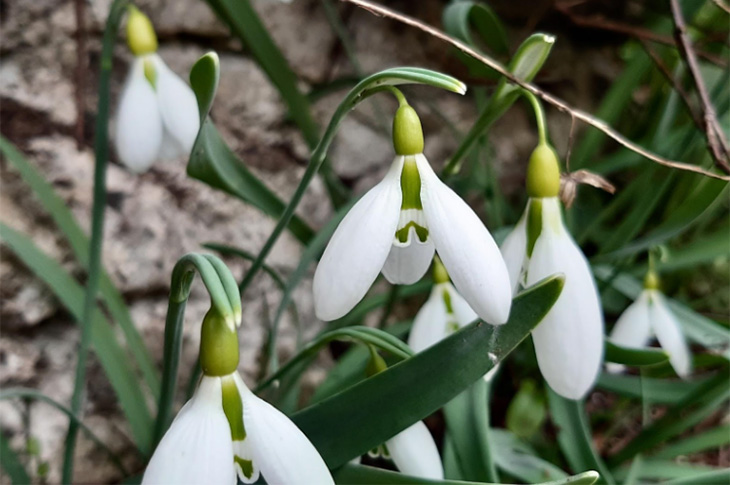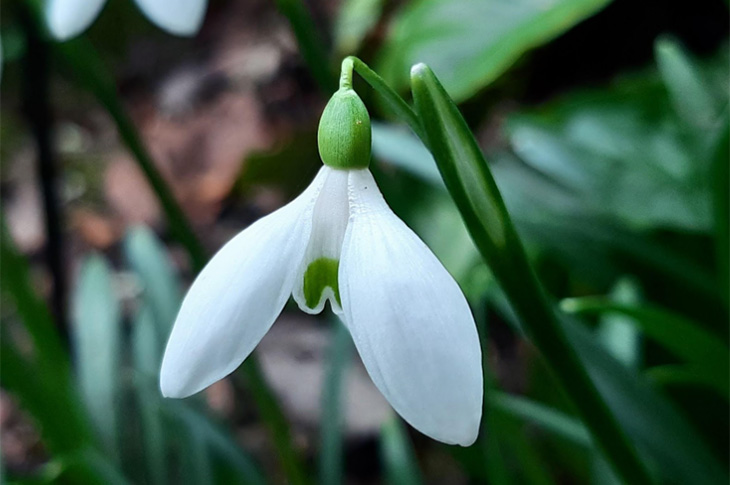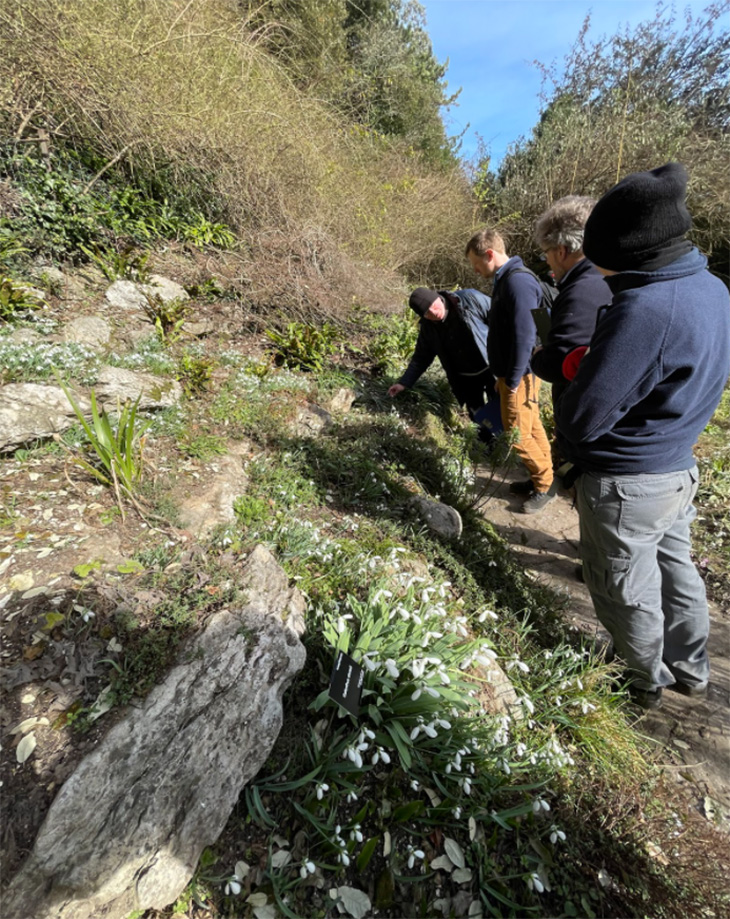 Hi everyone, I’m Alex and I’m the Curator at Worthing’s treasured Highdown Gardens.
Hi everyone, I’m Alex and I’m the Curator at Worthing’s treasured Highdown Gardens.
Over the decades that Sir Frederick Stern spent creating the garden here at Highdown, few plants captured his attention like snowdrops (Galanthus).
Such was his passion, he not only wrote a book about them and their close cousins the snowflakes (Leucojum), he was the first to describe more than one species and he even devised a method of identifying them that is still used today.
He built an admirable collection thanks to his many friends and contacts that either lived in or travelled to the parts of Eurasia where Galanthus are found in the wild. Back then, in the early to mid-20th century, wild plant collection was virtually unrestricted when compared with today.
Photo: Snowdrop scene at Highdown

Snowdrops grow wild across many parts of South, Central and Eastern Europe, across into the Caucasus and adjacent parts of the Middle East. There is a concentration of species around the Caucasus and the Balkans. The name Galanthus means milk flower and is a portmanteau derived from Greek gala (milk) and anthos (flower).
Although there are a great many species to be found in the garden, three that I find especially interesting are Galanthus gracilis, G. ikariae and G. rizehensis.
Galanthus gracilis is arguably the species that is most associated with Highdown as there are such a large number of them here. They flower between January and the middle of February. The name gracilis means slender or light. This is reflected in the gently twisting narrow grey-green leaves. They are pretty and unassuming. Although, like almost all species, the flowers are quite variable, they almost always have an olive-green ovary (the part that you see above the white petals) and have two marks on the inner segment of the flower, one at the top and one at the bottom.
Photo: Galanthus gracilis

Galanthus ikariae flower later than G. gracilis. They get their name from the Greek Island Ikaria, from which they are native. This island was named after Icarus, the boy from mythology who flew too close to the sun and paid the ultimate price. There’s no danger of these snowdrops getting dangerously close to the sun although they do enjoy a warm sheltered spot and dislike very cold winters. You can recognise them by their deep-green, glossy leaves and by the single mark on their inner segment that looks like a pair of natty green Bermuda shorts.
Photo: Galanthus ikariae

While Galanthus rizehensis is not the most ornamental snowdrop, it does have a quiet, understated charm. What makes it interesting is that it is one of the snowdrops that Stern was the first to describe. He grew seeds that were sent to him by his friend E. A. Bowles from Rize in Turkey. He noticed that a couple of the plants that germinated from this batch were different to anything else that he had seen. He described the plant, pressed a sample and sent it to the British Museum Herbarium where it was declared a new species.
Photo: Galanthus rizehensis

Many of the species that Stern grew at Highdown are still here and doing brilliantly. To celebrate that, we are carrying on the tradition of recent years by holding a Snowdrop Festival in conjunction with the charitable organisation National Garden Scheme (NGS) on Thursday 15th February 2024. It’s still free to visit the garden when the festival is on, but visitors can donate to the NGS at the gate.
Click here to book a place on the snowdrop tours
Photo: The team preparing for the festival
